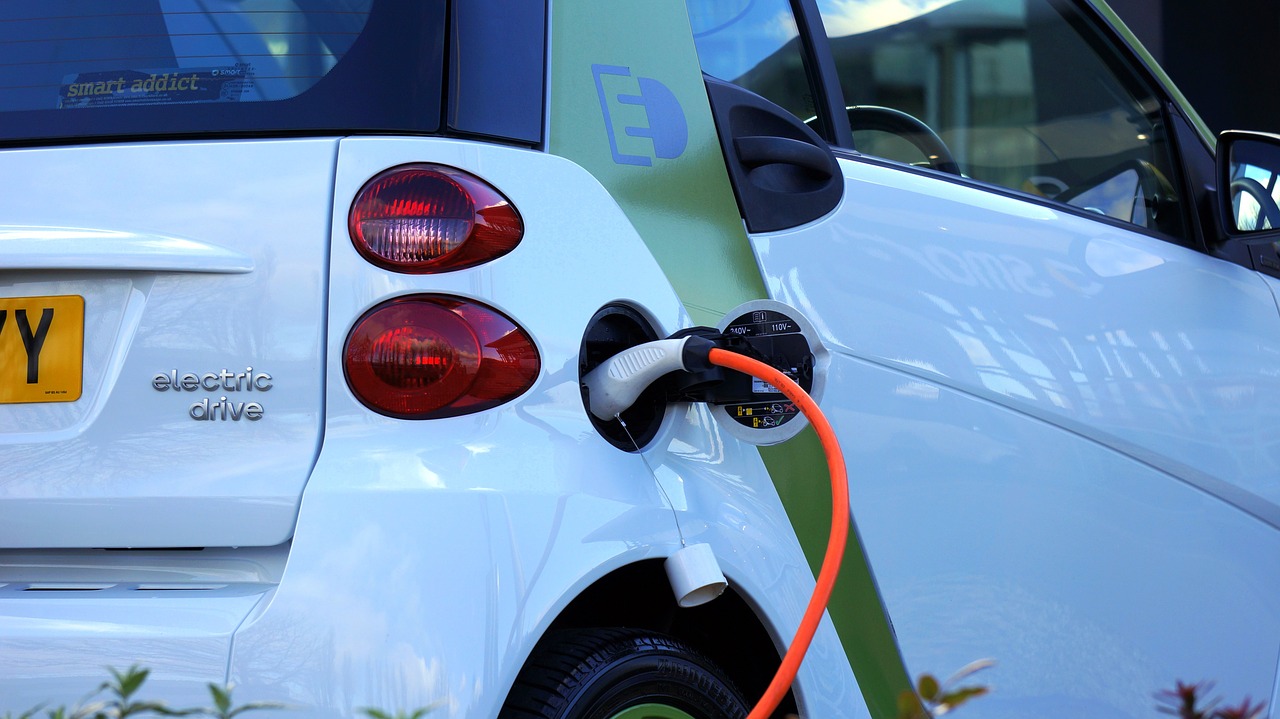Modified on
20 Jan 2022 03:12 pm
Fuel Cell and Ultracapacitors: Industry Overview and Importance

Skill-Lync
Fuel Cell and Ultracapacitors: Industry Overview and Importance
As our reserves of fossil fuels get depleted, the world is forced to innovate and create sustainable solutions, one of the most intriguing areas is the transition of petrol-guzzling cars to electric vehicles, initially powered by lithium-ion batteries.
While EVs are quite popular right now, an important technology in automotive that deserves mention is fuel cells and ultracapacitors for EVs. With these, the move towards sustainability would become even more challenging.
This article is an overview of the fuel cell industry, the use-cases of fuel cells in transportation, the use of ultracapacitor in automotive, leading hardware solutions providers for the fuel cell stack, and much more.

The Fuel Cell Industry
The fuel cell passenger car market has been gathering pace in recent times. While fuel cells are slowly coming into the limelight now, but there have been OEMs that have been researching them for a long time.
- Toyota has been conducting research and development in the field for a couple of decades. They finally came up with Toyota Mirai, an actual production vehicle that is available for lease or sale in countries like the US and some parts of Europe.
- Mercedes has been working on fuel cell powertrains, and they have also come up with production vehicles A-Class, B-Class.
- Honda has a fuel cell vehicle called clarity, which is also available mostly in the US and Europe in small quantities.
- Hyundai has fuel cell power trains and a couple of models in production.
- Audi is scheduled to release a vehicle called H-Tron. The H-Tron is based on the E-Tron, a fully electric vehicle, but the only difference is the addition of a fuel cell powertrain.
- BMW has also been exploring the area and plans to develop a third-generation fuel cell called the X-7 in partnership with Toyota.
Not only are these companies diligently doing their R&D, but they have also been working together collaboratively to harness the knowledge they already have and open up the potential of fuel cells for the entire industry.
Use-Cases: Fuel Cells in Transportation
1. Hyundai With H2 Energy
Hyundai has partnered with H2 energy, a hydrogen fuel supplier in Europe. H2 energy produces hydrogen as a fuel and supplies it to vehicles or trucks and any other fuel cell components. Hyundai is planning to supply 1000 hydrogen-powered fuel cell trucks to Switzerland.
2. Scania
Scania is a Swedish truck manufacturer, which has come up with some fuel cell trucks and also completed successful trials in Norway.
3. General Motors
American automotive giant General Motors has developed a truck for the US army.
4. Tata Motors
Tata Motors has developed a Starbus with a fuel cell powertrain to be generally used in the city for transporting people.
Why Fuel Cells for Transportation?
- As the distance traveled becomes higher, battery EVs become highly expensive because of the need to carry a heavy battery pack.
- Similarly, if you observe the payload, the payload in fuel cell vehicles (FCV) is much higher compared to electric trucks.
- The refueling rate for FCV is much higher. Therefore, you can just fill up the vehicle with hydrogen-like fuel similar to how you would fill up diesel or petrol.
- The electric powertrain has a very long charging time, as everybody knows. So, it's not helpful when it comes to transportation.
- The challenge of the range is also overcome because the fuel cell is essentially a power-producing unit onboard. While there is hydrogen in the tank, electricity can keep getting produced and propel the vehicle. Therefore, the range in fuel cell powertrain compared to an electric powertrain is much better.
Use of Ultracapacitor in Automotive
Ultracapacitor has been in use in automotive for some time now. The ultracapacitor systems include:
1. Start-Stop System
Start-stop ultracapacitor systems have high power density. They ensure energy is delivered fast, allowing for vehicles to restart without a pause in-vehicle operation. Compared to the start-stop systems powered by batteries, these systems are quicker, smoother, and create fewer vibrations.
Companies like Peugeot, a french OEM, and Mazda from Japan have been using stop-start systems along with regenerative braking.
2. Regenerative Braking
The regenerative braking system simply means that when you take your foot off the accelerator pedal, the car starts to de-accelerate. The remaining energy charges the ultracapacitor, thereby ensuring better energy utilization.
The electricity from the ultracapacitor, in turn, is supplied to the remaining onboard appliances like the music system, screen, or lamps. The novelty in this system is that the electricity is essentially coming for free because the kinetic energy is utilized as electrical energy in the ultracapacitor.
Examples of this system include the Mazda i-ELoop, the Toyota Yaris Hybrid-R, and Tesla, which is making strategic acquisitions of energy storage companies such as Maxwell Technologies.
Battery and Ultracapacitors as Complements
The battery and ultracapacitor complement and cover up each other's limitations. The batteries are very energy-dense while the ultracapacitor is very power-dense. When you need to accelerate, and you start from a stop condition, the ultracapacitor works better than the batteries in that scenario.
The automotive world right now is looking into combining the best of both worlds where you can have good energy as well as power density. The key is to increase the capacity of the ultracapacitor or improve batteries by using the properties of ultracapacitors.
Leading Hardware Solution Provider for Fuel Cell Stack
1. Ballard System
Ballard system is one of the biggest suppliers of fuel cell systems. It has been working with most of the OEMs like Volkswagen, Audi, Ford, Honda. Some of the other automotive companies had initially collaborated with Ballard systems as well.
Ballard has been working in this field for quite some time. Therefore, most of the OEMs, instead of reinventing the wheel for components and hardware, try to procure from specializing companies like Ballard Systems.
2. Nuvera Fuel Cells and Aisin
Nuvera Fuel Cells is a development-stage tech and product development company working on fuel cell stacks and related systems. Aisin is a Japanese automotive supplier working on fuel cells for a long time as well.
3. General Motors and Honda
Many OEMs started in-house research in developing fuel cells, stack, components, and the entire control systems for them. Examples of such OEMs include General Motors and Honda.
4. Magna Powertrain and AVL Powertrain
Magna Powertrain and AVL Powertrain are powertrain supplier companies. They collaborate with Ballard Systems to procure the hardware, which is the fuel cell stack for Ballard System. Then they try to offer it as a complete solution to customers like OEMs. The overall solution consists of a fuel cell system with the controlling software and hardware safety software as well.

5. Toyota Fuel Cell System
Toyota Fuel Cell system is one of the most advanced fuel-cell systems developed by Toyota in the house. The system in the Toyota Mirai uses the same fuel cell system.
6. NuCellSys
NuCellSys, a german company, was acquired by Daimler. Daimler also owns Mercedes' Class A and Class B that have fuel cell powertrain. It came initially from NuCellSys, was later developed a bit more by Mercedes for their application, and then deployed in their vehicles.
In Closing
The field of fuel cells is vast. The use of fuel cells and ultracapacitors for EVs has shown a consistent uptrend in the industry and promises an enriching career. However, it requires a lot of practical learning and consistent efforts.
Understand the fundamentals of fuel cells by enrolling in one of the many courses offered by Skill-Lync. Visit our website to register today.
Author
Navin Baskar
Author

Skill-Lync
Subscribe to Our Free Newsletter

Continue Reading
Related Blogs
Explore the fundamentals of vehicle dynamics and ultimate trends in the field from design and modeling to control with Skill Lync's exclusive course on the subject. Read about how Skill-Lync's CAE courses can help you get employed.
29 Jul 2020
In this article, we will briefly discuss the working, applications, and features of the one-dimensional systematic simulation tool, GT-Power, in Emission Control Strategy, engine calibration, hybrid vehicle modeling. Read about how Skill-Lync's CAE courses can help you get employed.
29 Jul 2020
This article offers a brief introduction to the globally accepted standard of Geometric Dimensioning and Tolerancing, and its importance for the entire manufacturing process. Read about how Skill-Lync's CAE courses can help you get employed.
29 Jul 2020
In this blog we will read about Going a step into Biomechanics and how Skill-Lync's CAE course will help you get employed.
10 May 2020
The powertrain is the most prominent source of vibrations that affects the driving experience for the people on board. This blog from Skill-Lync examines these vibrations to help enhance that experience.
22 Aug 2020
Author

Skill-Lync
Subscribe to Our Free Newsletter

Continue Reading
Related Blogs
Explore the fundamentals of vehicle dynamics and ultimate trends in the field from design and modeling to control with Skill Lync's exclusive course on the subject. Read about how Skill-Lync's CAE courses can help you get employed.
29 Jul 2020
In this article, we will briefly discuss the working, applications, and features of the one-dimensional systematic simulation tool, GT-Power, in Emission Control Strategy, engine calibration, hybrid vehicle modeling. Read about how Skill-Lync's CAE courses can help you get employed.
29 Jul 2020
This article offers a brief introduction to the globally accepted standard of Geometric Dimensioning and Tolerancing, and its importance for the entire manufacturing process. Read about how Skill-Lync's CAE courses can help you get employed.
29 Jul 2020
In this blog we will read about Going a step into Biomechanics and how Skill-Lync's CAE course will help you get employed.
10 May 2020
The powertrain is the most prominent source of vibrations that affects the driving experience for the people on board. This blog from Skill-Lync examines these vibrations to help enhance that experience.
22 Aug 2020
Related Courses
